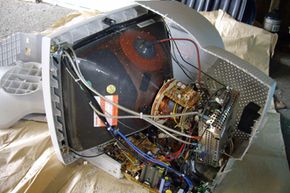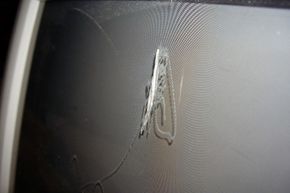Technological advances have rendered old, bulky televisions obsolete. Built around cathode-ray tubes (CRTs), these sets had one fatal flaw -- as screen size increased, so did the bulk and mass of the TV itself.
If you wanted a TV with a screen of 30 inches or larger, you were probably going to need two people just to move it across a room. The reason? A CRT tube has a vacuum inside, so the glass needs to resist the atmospheric pressure pressing against the surface area of the screen. The bigger the screen, the more surface. The more surface, the more pressure, and the more pressure the screen was resisting, the thicker the glass had to be.
Advertisement
CRT TVs were also bulky because the electron guns that fire electrons at the inside of the screen need a certain angle of attack to work properly. With a large screen, the guns need to be farther away to achieve this angle with respect to the outer screen edges. Moving the electron guns farther back meant making the TV itself that much larger.
Today, LCD and plasma high-definition TVs not only have better picture quality than old CRT TVs, they're less bulky and weigh far less. But a number of factors have made it more likely that our TVs will suffer damage. For one thing, their light weight makes them more susceptible to being bumped off of their stands or tables. People are also more active around their TVs these days, thanks in part to gaming consoles like the Nintendo Wii.
But are these newer TV technologies inherently fragile? Are they more likely to break or shatter than the CRTs of old? The author tested some old CRTs by throwing things at them and even smashing them with a hammer. Then we compared the technical specifications of a CRT with those of an LCD or plasma screen to find out the crucial physical differences that might make a newer TV more susceptible to damage.
Advertisement


